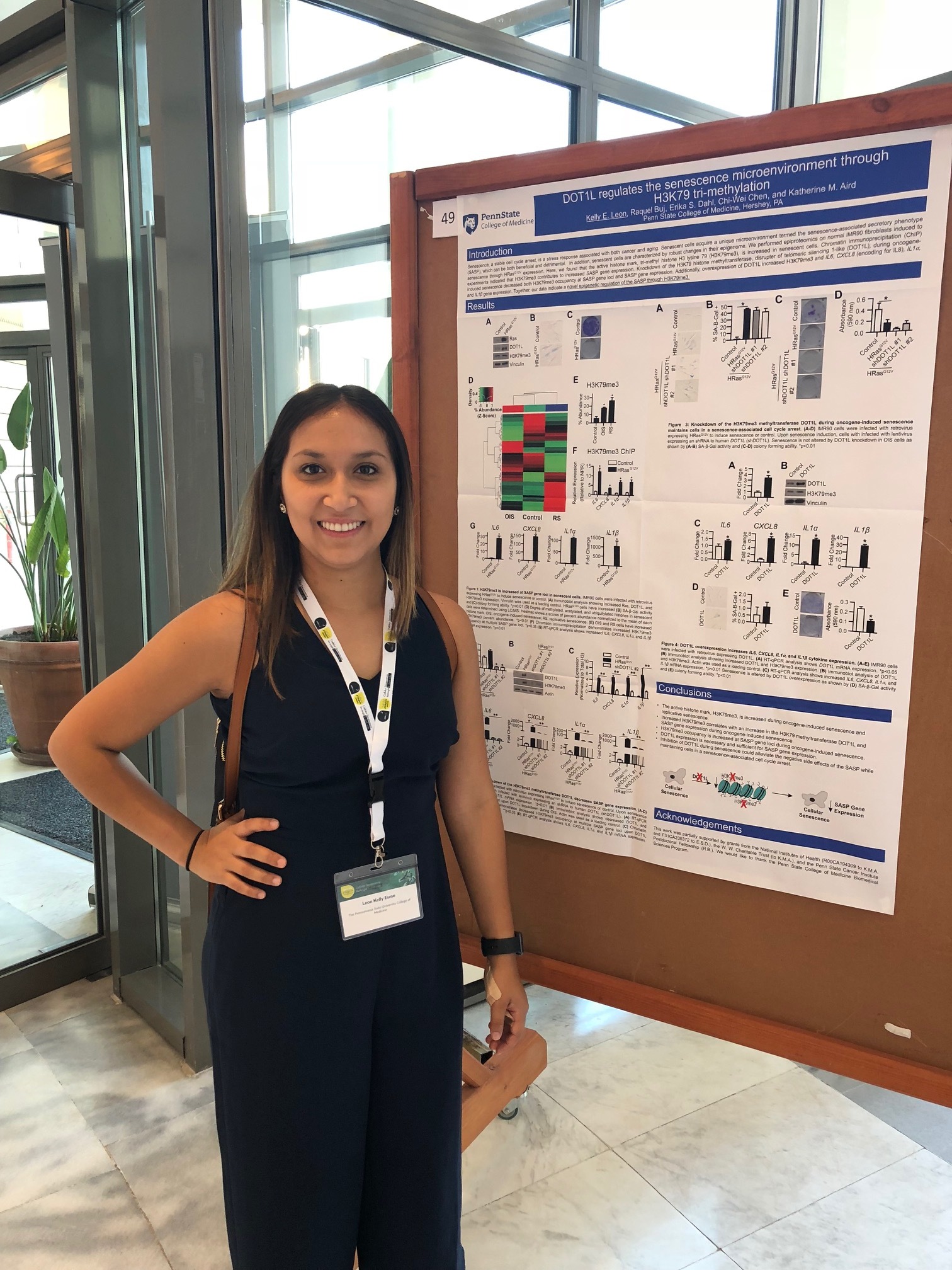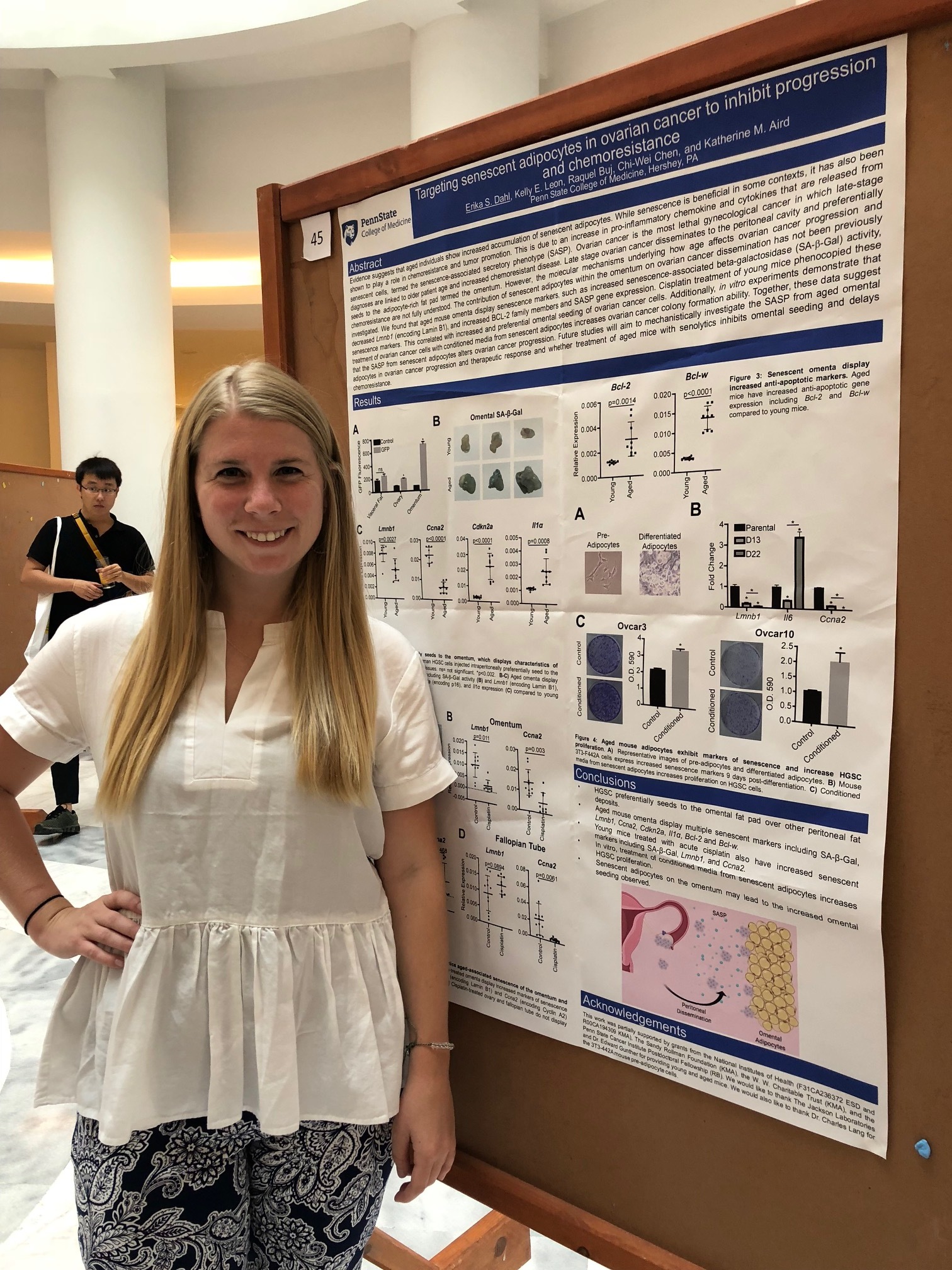Aird lab trainees Raquel, Kelly, and Erika present their work at the International Cellular Senescence Association meeting
/The International Cellular Senescence Association meeting is underway in Athens. Raquel was chosen for a short talk, and both Kelly and Erika presented posters of their work.
Raquel giving a talk on her recently published work on how p16 loss increases nucleotide metabolism to bypass senescence.
Kelly presenting her work on how the methyltransferase DOT1L is critical for the SASP
Erika presenting her work on senescence in the omentum and how that potentially relates to ovarian cancer dissemination






